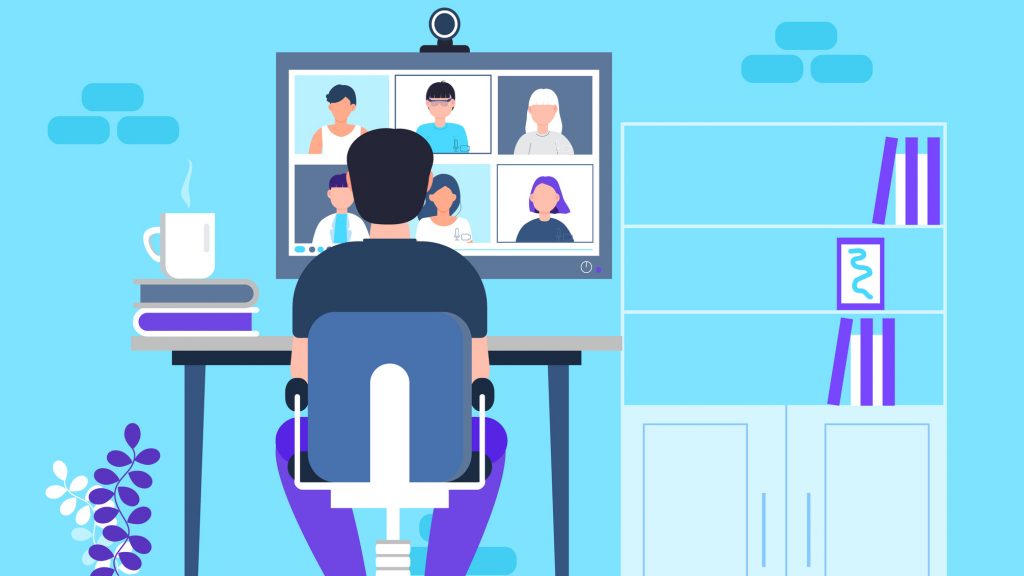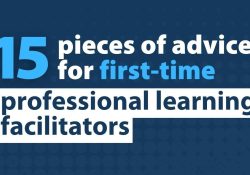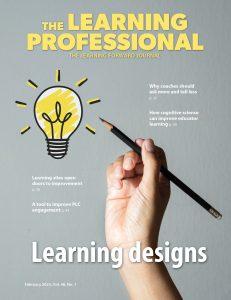After a year of pandemic disruption, professional learning leaders wonder: how might we bring back the magic of face-to-face professional learning? We crave that amazing experience of energy in the room, the hum of adult learning, the joy of laughing and interacting, the power and influence of group dynamics. Just as we adjust to a changed notion of “normal life,” we should focus not on bringing back the magic but creating the magic in new ways.
The pandemic has presented us with a new niche of professional engagement – working with adults virtually – and it is here to stay. Virtual professional learning will continue to be part of our landscape for a variety of reasons, including ongoing health concerns, convenience, and the opportunity to connect with people outside of our immediate geographic area. We should leverage this opportunity, not because we have to, but because it’s the right thing to do.
''Virtual PL will continue to be part of our landscape for a variety of reasons, including ongoing health concerns, convenience, & the opportunity to connect with people outside of our immediate geographic area.'' Share on XAs we have learned over the past year, our pedagogy and the way we present ourselves must shift for virtual professional learning, because what worked face-to-face does not readily transfer to a virtual environment. For instance, we can no longer move from table to table to check in and establish rapport, and we need a new way to apply wait time because we can’t take a three or four step walk in silence after asking a question.
The good news is that every facilitation and presentation move you made in person has a virtual equivalent. The challenge is discovering what that virtual equivalent is. Investing the time to make those adjustments will help you build credibility and rapport, facilitate questioning and dialogue, recover when things don’t go as planned, and create emotional safety in a cognitively challenging environment.
Good news! Every facilitation and presentation move you made in person has a virtual equivalent, says Kendall Zoller (@Rifflvr2_Skater) in this @LearningForward blog post. Share on XIn my work leading professional learning, I’ve discovered the following generalizations about how to shift from an in-person to a virtual setting. These generationalizations are rooted in Communicative Intelligence (Zoller, 2015) and manifest in specific, replicable behaviors – behaviors you can learn, refine, and individualize.
The camera is the person. Eye contact is one of the most important ways to establish rapport. To make that connection virtually, we need to look right into the lens. When we look at others’ faces on the screen, we may feel like we are making eye contact, but from their view, we are looking away.
Pausing can look like a frozen screen. Pausing is powerful. It supports thinking, places people in a space of calm, and allows for think time. However, when we pause and do not move in a virtual environment, participants may think the computer froze. One strategy is to announce that you are going to pause, or to let people know you’ll be calling on them after a few seconds. You may also want to make the pause visible, for example by taking a sip of water or breathing more deeply.
Camera angles and lighting can make it feel like we are in person. Tips from television and movie productions can help us be seen on camera as if we were in person. Place your camera at eye level or slightly above. Consider balanced lighting from the front as opposed to the back or above. And although you don’t have the same amount of space as you do in person, use the space you do have. For example, shift to camera left or right to anchor information; move forward to emote; move back to think or pause.
Animating your presence makes a presentation come alive. If the camera is the person, and the audience’s view of you is a small boxed image, then the audience is looking at an animation of who you are. This means that you should smile wider, open your eyes larger, laugh louder in order for viewers to accurately decipher what you are trying to communicate. Make your facial expressions larger, use gestures intentionally, and vary your position relative to the camera. And because depth perception is compressed on screen, consider having your hands closer to your face than normal.
Virtual visibility is ephemeral. What others see on the screen lives only when it is visible. When face-to-face, we can post the agenda or content notes on an easel, flipchart, or wall. Since you can’t do this online, identify what you want participants to remember and create signposts for it. Consider having the image of the agenda on screen every time you refer to it. For example, if it is an hour session with 5 agenda items, think about having the agenda on 5 slides throughout your virtual meeting – placed strategically after each content segment.
Agility is your ally. When presenting in person, many of us find standing powerful. Consider standing when virtual, too. You will find you breathe more effectively, more oxygen goes to your brain to support your thinking and processing, and you will be more agile and fluid in your movements and gesturing. Before you begin, choose when you want to stand or sit and ensure your positions on camera are visible and show your gestures.
Need help leading professional learning virtually? Here are tips and tricks from @Rifflvr2_Skater that will help you build credibility and rapport & facilitate questioning and dialogue virtually. Share on XBefore you apply these concepts, pause and reflect on what you already do face-to-face. Then identify the two or three strategies that are most important for you to develop, and practice them. Making these shifts takes planning and intentionality – maybe more intentionality than the in-person routines you’re used to.
Just as we tell students, practice makes progress. Take the time to think about how you want to be seen on screen and rehearse on camera. Record yourself or ask friends and colleagues to watch. Think about your position, pace of speech, speed of gestures, and wait time. With practice, you can ensure that your message is heard – and you may find that virtual learning can have a magic of its own.
References
Zoller, K. (2015). The philosophy of communicative intelligence in cross-cultural collaboration. In N. Erbe and A.H. Normore (Eds.), Cross cultural collaboration and leadership in modern organizations (pp. 303-320). IGI Global Publishers.
Zoller, K & Landry, C (2010). Choreography of Presenting: 7 Essential Abilities of Effective Presenters. Corwin Press.









